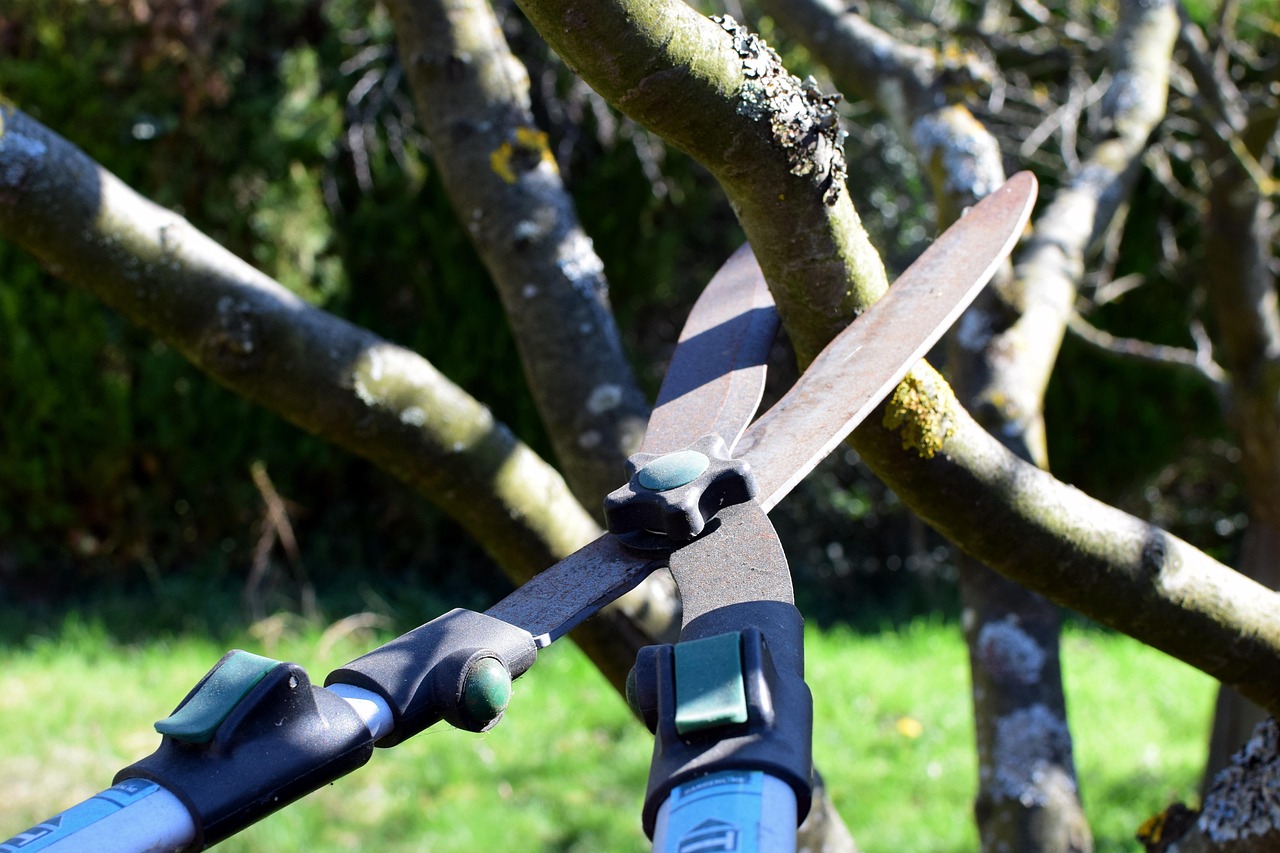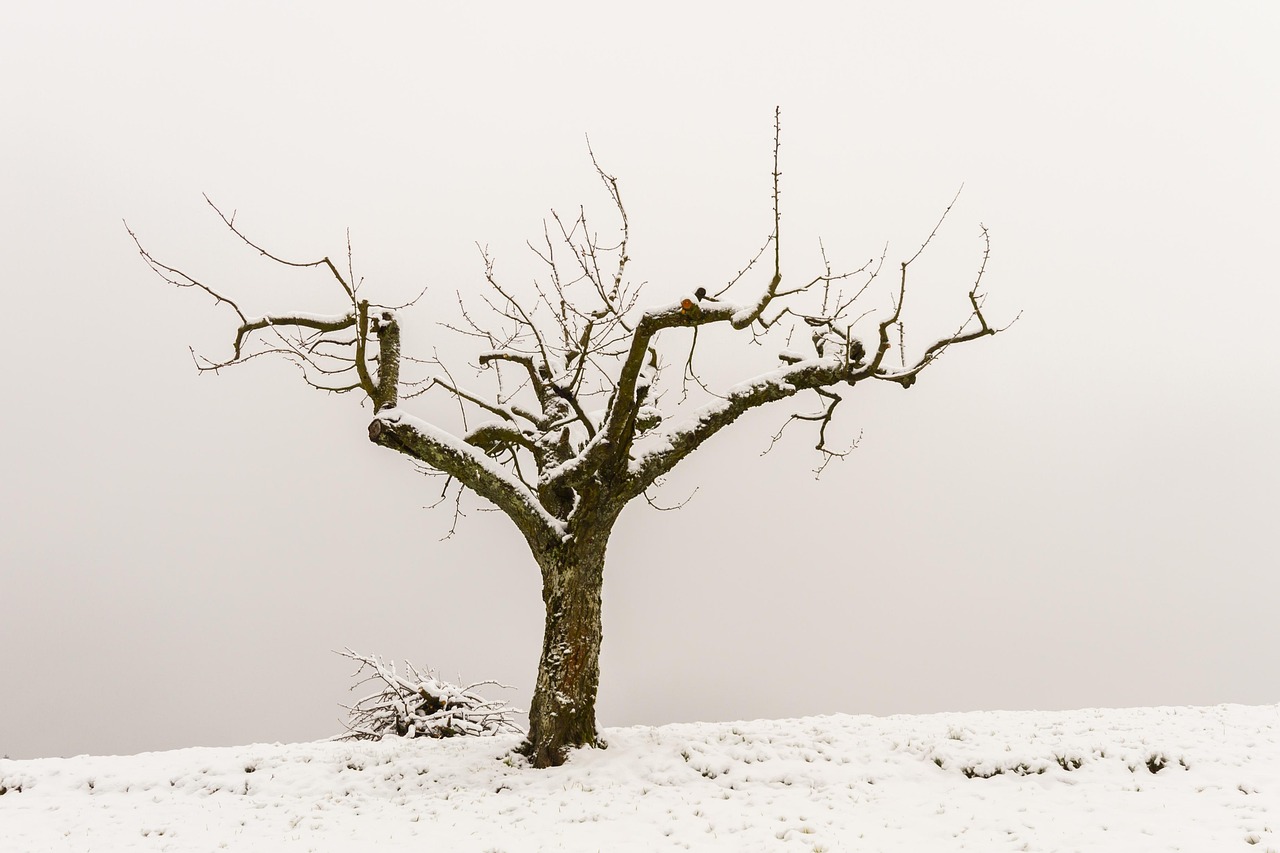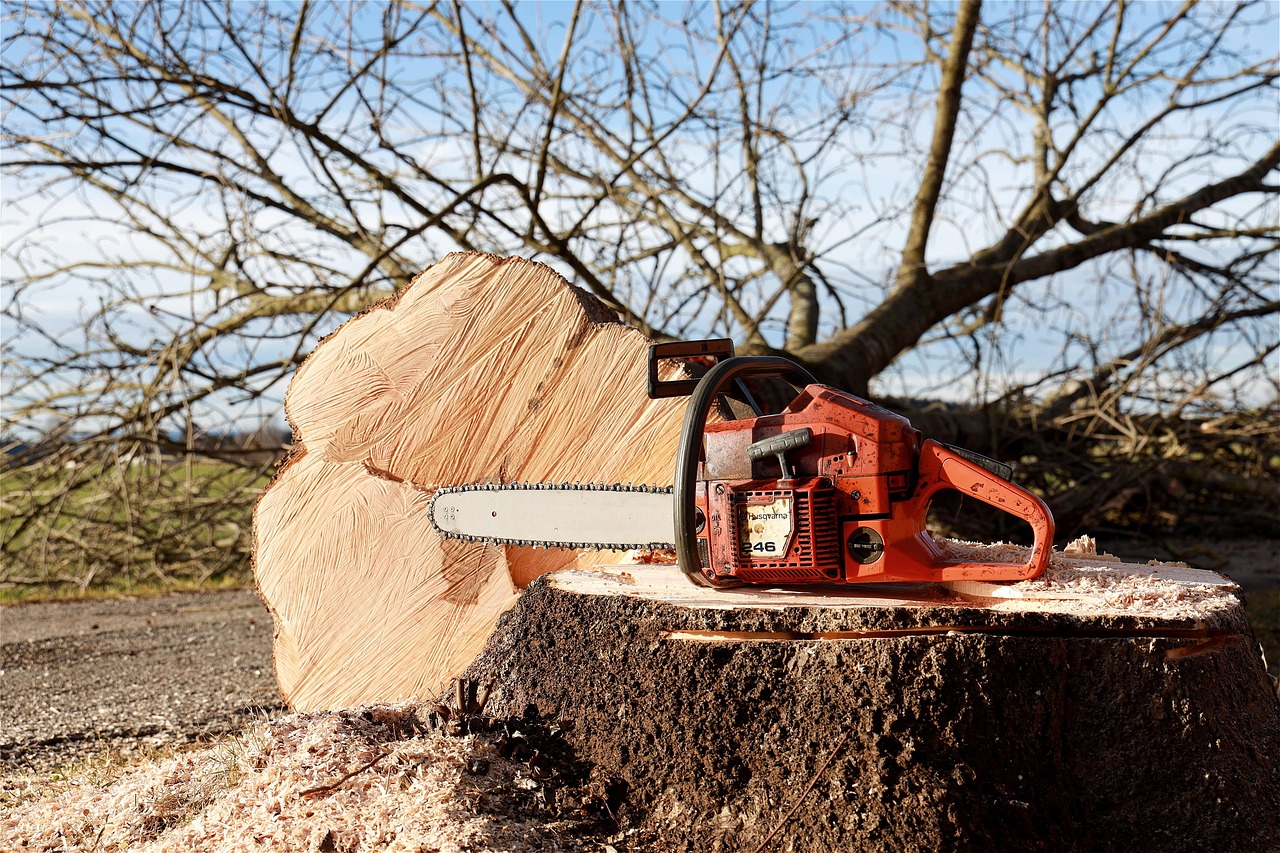Common problems in overgrown tree pruning include improper technique, excessive removal of foliage, and the risk of disease. These issues can lead to tree stress, poor growth, and even tree death if not managed properly.
Pruning is a vital part of tree maintenance, especially for overgrown trees. Over time, trees can become dense with branches and foliage, which can prevent light from reaching inner parts of the tree. This can hinder growth and promote disease. Proper pruning helps maintain a tree’s health, aesthetics, and safety. However, overgrown trees present unique challenges that can complicate this process.

Many property owners may not realize the importance of understanding common pitfalls when pruning overgrown trees. With the right knowledge and techniques, these problems can be avoided or mitigated. Below are some common issues faced during the pruning process:
Common Problems Encountered in Overgrown Tree Pruning
When dealing with overgrown trees, several problems may arise. Understanding these challenges is essential for effective pruning. Here are some key issues to consider:
- Improper Techniques: Many people lack the training needed to prune effectively. Without proper techniques, they may make cuts that harm the tree.
- Excessive Foliage Removal: Removing too many branches can shock the tree. This can lead to stunted growth or even death.
- Risk of Disease: Open wounds from improper cuts can become entry points for pathogens, leading to diseases.
- Incorrect Timing: Pruning at the wrong time of year can damage the tree. For example, late winter or early spring is often recommended for many species.
- Lack of Knowledge: Not knowing the specific needs of a tree species can lead to inappropriate pruning practices.
The following table outlines some specific problems and their potential consequences when pruning overgrown trees:

| Problem | Potential Consequences |
|---|---|
| Improper Cuts | Can lead to branch dieback and decay. |
| Over-Pruning | Stress on the tree may result in weak growth or death. |
| Pest Infestation | Increased vulnerability to insects and diseases. |
| Falling Branches | Increased risk of injury or property damage. |
| Improper Tools | Can create jagged cuts that do not heal properly. |
A common misconception about pruning is that it is simply a matter of cutting away branches. In reality, each cut has a purpose. Poorly executed pruning can inadvertently harm the tree more than help it. It is crucial to assess each branch’s health before making decisions about removal.
Another significant concern is the timing of the pruning. Different species have unique growth cycles and requirements. For instance, flowering trees should be pruned after blooming to avoid cutting off potential buds for the next season. Understanding these cycles is key to ensuring healthy growth and maintaining the aesthetic appeal of the tree.
Furthermore, ensuring that tools are clean and sharp is essential. Dull or dirty equipment can cause tears in bark, leading to increased susceptibility to diseases. Always disinfect tools between cuts when working on multiple trees to prevent cross-contamination.

In addition to these factors, environmental conditions can also influence the outcome of pruning efforts. For example, drought-stressed trees may react poorly to heavy pruning, leading to further decline. Likewise, trees that have recently been planted require different care than established ones.
Ultimately, professional guidance may be beneficial when managing overgrown trees. Arborists have the experience and knowledge necessary to assess a tree’s needs accurately. They can provide tailored advice on how and when to prune effectively.
Understanding Tree Biology for Effective Pruning
To effectively prune overgrown trees, it is crucial to have a basic understanding of tree biology. Knowing how trees grow and respond to pruning will lead to better decisions and healthier trees. Trees consist of several vital components, including roots, trunk, branches, and leaves. Each part plays a significant role in the overall health and stability of the tree.

The roots anchor the tree and absorb water and nutrients from the soil. The trunk supports the tree and transports nutrients and water between the roots and leaves. Branches extend from the trunk, allowing leaves to capture sunlight for photosynthesis. Understanding these functions helps in making more informed pruning choices.
The Importance of Photosynthesis
Photosynthesis is the process by which trees convert sunlight into energy. Leaves play a pivotal role in this process. When pruning, it is essential to maintain enough foliage to support photosynthesis. Removing too many leaves can significantly impact a tree’s ability to produce energy.
- Leaf Area: The amount of leaf area directly affects the tree’s growth. More leaves mean more energy production.
- Sunlight Exposure: Proper pruning can increase sunlight exposure to inner branches, promoting healthier growth.
- Balance: Strive for a balance between removing excess branches while preserving enough foliage for energy needs.
Common Mistakes in Overgrown Tree Pruning
Even experienced pruners can make mistakes when tackling overgrown trees. Recognizing these common errors can help prevent costly damage to the trees. Here are some pitfalls to watch for:
- Heading Cuts: This technique involves cutting back branches to a bud or branch. It can lead to excessive new growth and a bushy appearance.
- Topping: Severely cutting back a tree’s crown can result in weak growth and increased vulnerability to disease.
- Neglecting Tree Structure: Failing to consider the natural shape of the tree can lead to an unbalanced appearance.
- Ignoring Dead or Diseased Wood: Not removing dead or diseased branches can spread problems throughout the tree.
Identifying Healthy vs. Damaged Branches
Recognizing the difference between healthy and damaged branches is essential in pruning. Healthy branches typically have the following characteristics:
- Firm texture with vibrant color.
- No signs of decay or fungal growth.
- Flexible and capable of bending without breaking.
In contrast, damaged branches may exhibit:
- Brittle texture and dull color.
- Visible signs of decay, such as mushrooms or dark spots.
- Crumbling bark or cracks along the branch.
The Right Tools for Pruning
Using the right tools makes a significant difference in the success of pruning efforts. Here are some common tools used for pruning along with their specific uses:
| Tool | Description | Best Use |
|---|---|---|
| Hand Pruners | Small, manual cutting tool for branches up to ¾ inch thick. | Ideal for small branches and shaping. |
| Loppers | Larger cutting tool with long handles for leverage. | Best for branches up to 1 ½ inches thick. |
| Saw | Used for cutting larger branches that cannot be pruned with loppers or hand pruners. | Effective for branches over 1 ½ inches thick. |
| Safety Gear | Includes gloves, goggles, and hard hats. | Protects against injuries during pruning activities. |
Maintaining tools is as important as selecting them. Ensure tools are clean and sharp before use. Regular maintenance extends the life of tools and ensures clean cuts that promote healing in trees.
Safety Considerations When Pruning Trees
Pruning can pose safety risks if proper precautions are not taken. Here are some safety tips to consider:
- Wear Protective Gear: Always wear gloves, goggles, and sturdy footwear to protect against falls and cuts.
- Check Your Surroundings: Be aware of power lines, buildings, and other structures that may be near the tree.
- Use Ladders Safely: If using a ladder, ensure it is stable and positioned correctly before climbing.
- Work with a Partner: Having someone nearby can help in case of an emergency or if assistance is needed.
Taking these precautions ensures a safer pruning experience while minimizing the risk of accidents or injuries during tree maintenance activities.
Tools and Techniques for Pruning Overgrown Trees
Knowing the right tools and techniques is essential for effective pruning of overgrown trees. The right approach not only ensures the health of the tree but also enhances safety during the process. As pruning can vary based on the species of tree and its condition, understanding a range of techniques is crucial.
Techniques for Pruning
Different pruning techniques can yield different results. Here are some common methods used in tree pruning:
- Thinning: This technique involves selectively removing branches to improve air circulation and light penetration. Thinning encourages healthy growth and reduces the risk of disease.
- Reduction: Reduction pruning decreases the size of a tree by cutting back to a lateral branch. This technique helps maintain the tree’s shape while minimizing stress.
- Tip Pruning: This involves cutting back the tips of branches to encourage bushier growth. It is often used for ornamental trees.
- Crown Cleaning: This method removes dead, broken, or diseased branches from the tree crown, promoting overall health.
Each technique serves a specific purpose, and using the appropriate method can lead to successful outcomes in managing overgrown trees.
Timing Your Pruning
The timing of pruning is critical for tree health. Pruning at the wrong time can result in stress and inhibit growth. Here are some guidelines on when to prune:
- Late Winter to Early Spring: This is generally the best time for most deciduous trees. Pruning during dormancy minimizes sap loss and encourages vigorous growth as the tree wakes up in spring.
- After Flowering: For flowering trees, it is best to prune once the blooms have faded. This ensures that you do not remove potential flower buds for the following year.
- Avoid Late Fall: Pruning in late fall can expose cuts to winter weather, increasing the risk of damage.
- Consider Species-Specific Needs: Some trees have unique requirements, so it’s essential to research the specific species before deciding when to prune.
The Effect of Seasons on Tree Growth
Understanding how seasons affect tree growth can also guide pruning decisions. Here is a brief overview:
| Season | Tree Activity | Pruning Considerations |
|---|---|---|
| Spring | Active growth and flowering | Avoid heavy pruning; focus on light maintenance. |
| Summer | Continued growth; foliage is full | Good for minor shaping and maintenance pruning. |
| Fall | Preparation for dormancy | Avoid heavy pruning; focus on cleaning up dead wood. |
| Winter | Dormant phase; minimal activity | Ideal time for major pruning and corrective measures. |
Signs That Pruning Is Needed
Recognizing when a tree needs pruning can prevent problems before they escalate. Here are some signs to look for:
- Crowded Branches: If branches are crossing or crowded, it may be time for thinning to promote better airflow and reduce competition for light.
- Dead or Diseased Wood: Any dead, damaged, or diseased branches should be pruned immediately to prevent further spread.
- Pest Infestation: Signs of pest infestations can indicate that certain branches need removal to save the remainder of the tree.
- Unbalanced Growth: If one side of the tree appears significantly heavier than the other, corrective pruning can help restore balance.
Catching these signs early can significantly enhance a tree’s health and appearance while minimizing risks associated with overgrowth.
The Role of Soil Health in Tree Growth
The health of the soil directly impacts tree health. Trees require adequate nutrients and moisture from the soil to thrive. Here are some considerations regarding soil health:
- Nutrient Availability: Conducting a soil test can help determine if essential nutrients are lacking. Fertilization may be necessary to support healthy growth.
- Moisture Levels: Ensuring proper watering practices, especially during dry spells, will help trees cope with stress and recover from pruning more effectively.
- Soil Compaction: Heavy foot traffic or construction activities can compact soil, limiting root expansion. Aeration may be needed to improve conditions.
A healthy soil environment sets the stage for successful tree growth and recovery post-pruning, making it an essential aspect of tree care that should not be overlooked.
Managing Overgrown Trees Effectively
Effective management of overgrown trees requires continuous attention and care. As mentioned throughout this article, understanding tree biology, selecting the right tools and techniques, and recognizing the signs that pruning is needed are all critical aspects. However, there are additional considerations that can enhance the effectiveness of your pruning efforts.
Regular Maintenance
Regular maintenance is key to preventing trees from becoming overgrown in the first place. Here are some strategies to consider:
- Routine Inspections: Conduct regular inspections of your trees to identify any early signs of problems. This includes checking for dead branches, pest infestations, or diseases.
- Seasonal Pruning: Incorporate light pruning into your seasonal maintenance routine. This can include removing small dead branches or trimming back new growth to maintain the tree’s shape.
- Mulching: Apply mulch around the base of the tree to retain moisture, suppress weeds, and provide nutrients as it decomposes. This practice supports overall tree health.
- Watering: Ensure consistent watering practices, especially during dry spells. Deep watering encourages deeper root growth and establishes a stronger tree.
Identifying Tree Species and Their Needs
Different tree species have unique requirements, including growth patterns and pruning needs. Understanding the specific needs of the trees in your landscape can lead to better long-term care. Consider the following:
- Research Tree Species: Familiarize yourself with the specific tree species you are managing. Each species has its own growth habits and preferred pruning techniques.
- Consult Local Resources: Local extension services or arborists can provide valuable information about the best practices for your region.
- Consider Native Species: Planting native species can reduce maintenance needs, as these trees are well-adapted to local soil and climate conditions.
Common Myths About Tree Pruning
There are several myths surrounding tree pruning that can lead to improper practices. Understanding these myths can help you make more informed decisions:
- Myth: Trees Should Be Topped to Control Height: Topping can cause more harm than good, leading to weak growth and exposing the tree to disease.
- Myth: Pruning Is Only Necessary in Spring: While spring is a common time for pruning, many trees benefit from winter pruning as well.
- Myth: All Branches Can Be Cut at Any Time: Pruning at the wrong time can stress the tree and lead to complications.
The Importance of Professional Help
For particularly large or complex overgrown trees, seeking professional help may be the best course of action. Certified arborists have specialized training and experience that can ensure proper care. Benefits of hiring a professional include:
- Expert Assessment: Arborists can evaluate the health of the tree and recommend the best course of action.
- Safety: Professionals have the tools and knowledge to prune safely, especially when working near power lines or tall trees.
- Long-Term Care Plans: Arborists can help develop a long-term care plan tailored to your specific landscape needs.
Final Thoughts
Pruning overgrown trees is a vital aspect of tree care that requires understanding, skill, and attention to detail. By being aware of common problems related to overgrown tree pruning, property owners can take proactive measures to maintain healthy trees. Key takeaways include understanding tree biology, recognizing when pruning is needed, using appropriate techniques and tools, and considering soil health.
Moreover, regular maintenance and awareness of your tree species’ specific needs can prevent overgrowth and promote longevity. Embracing proper pruning practices not only enhances the beauty of your landscape but also contributes significantly to the overall health of your trees.
If you ever feel uncertain about how to approach pruning or managing tree health, do not hesitate to reach out for professional assistance. With the right knowledge and resources, you can ensure that your trees remain healthy and thriving for years to come.
